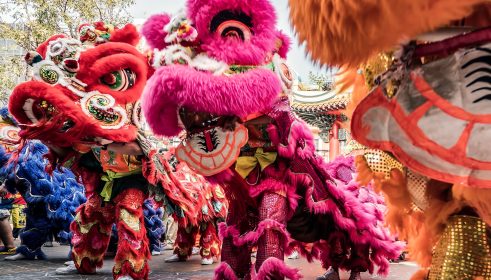Catholics in Thailand are waiting in anticipation as Pope Francis is to make a pastoral visit to Thailand later this month. His upcoming 32nd Apostolic Journey, November 20 to 26, is taking him to Thailand and Japan.
Father Rafaelle Sandonà, a missionary in Thailand, has spoken about what the papal visit means to the country.
This will be the second visit of a Pontiff to Thailand in over 35 years, Father Rafaelle Sandonà, said.
The motto of his Journey, “Christ’s Disciples, Missionary Disciples”, recalls the 350th anniversary of the establishment of the Apostolic Vicariate of Siam, created in 1669, that formally marked the beginning of the Church in Thailand.
Catholics form a tiny minority of Thailand’s over 68 million population, over 90% of which is Buddhist. Muslims form a little over 4% and Christians together make up only 1 %. Through the past 350 years, the Church has grown into 11 dioceses with about 390,000 Catholics.
Catholic Diocese of Northern Thailand

The Diocese of Chiang Mai, in northern Thailand, was established in November 1959. A few “fidei donum” priests from Italy have been serving the mission of Chae Hom and Lamphun for years.
Pope Francis erected the new diocese of Chiang Rai, by dividing the existing diocese of Chiang Mai, making it suffragan to the metropolitan see of Bangkok.
The Holy See made the announcement in 2018, noting that the pontiff appointed Mgr Joseph Vuthilert Haelom, hitherto vicar general of the archdiocese of the capital, as the first bishop of Chiang Rai.
The newly-established diocese covers 37,839 square km in northwestern Thailand. Including four provinces: Chiang Rai, Nan, Phayao, Phrae as well as Ngao district, Lampang province.
The episcopal see is in Chiang Rai, whose parish church – The Nativity of Our Lady – becomes the cathedral of the new territory.
About 18,000 Catholics live in the new diocese, out of a population of more than 2.6 million people. Its divided into 16 parishes with six diocesan priests, 41 religious and missionaries, plus 51 nuns.
Chiang Rai has only one major seminarian, plus 113 catechists and six Catholic schools

Mgr Joseph Vuthilert Haelom was born on 17 December 1951 in Lamsai, in the central province of Pathumthani (diocese of Bangkok).
Following his studies at the minor diocesan seminary in the capital, he completed his philosophical and theological studies at the Lux Mundi National Seminary in Sampran before his ordination as a priest on 3 August 1980. He was incardinated in the archdiocese of Bangkok.
After a stint as parochial vicar at the Assumption Cathedral in Bangkok for a year, he served as pastor in two churches between 1981 and 1989: St Teresa in Nongjok and Our Lady of Fatima in Bangkok. In the latter, he was the head master at St Joseph Upatham School and was deputy rector of the St Joseph minor seminary.
From 1995 to 2000, he was director of the Diocesan Commission for Social Works and pastor at the Holy Rosary Church, after which he returned to Sampran to act as rector of the pastoral centre until 2004.
Between 2004 and 2012, the prelate was parish priest at Sacred Heart of Jesus Cathedral in Chiang Mai, where he became vicar general in 2005, a position he also held in Bangkok starting in 2012 until his appointment as bishop of Chiang Rai.
Cardinal Fernando Filoni Visits Chiang Rai Diocese

Fr Maurizio Arioldi, superior delegate of the Pontifical Institute for Foreign Missions (PIME) in Thailand and Myanmar, spoke to AsiaNews about the joy felt by the institute and the local Church for the creation of the new diocese Chiang Rai and the appointment of Mgr Joseph Vuthilert Haelom as its bishop.
“He is someone we know. For many years, he was the vicar of the bishop of Chiang Mai, Mgr Francis Xavier Vira Arpondratana. We are happy, because his appointment is a sign of continuity. Mgr Joseph Vuthilert Haelom is someone who keeps issues within boundaries. It is a pleasure to work with him.”
I think that the creation of this new diocese can give a new impetus to evangelisation in the country,” Fr Arioldi noted. “The diocese of Chiang Mai, before the division, was too big to cover.”
“This has led to greater development around Chiang Mai, where most people are ethnic Karen. Whilst in Chiang Rai where other tribal groups also live, people find it harder to accept the Gospel.”
“For this reason, the idea of dividing the area will make it possible to better follow people. And also give impetus to the work of the Church.”
Chang Rai is a diocese that borders Laos and Myanmar and is full of challenges for the future.









